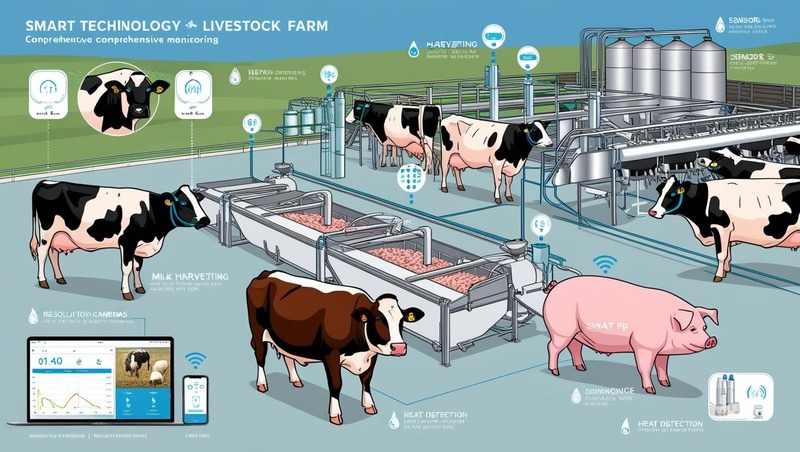The livestock monitoring market is poised for significant growth, driven by technological advancements and evolving consumer demands. However, several challenges may impact its trajectory. Below is an analysis of the key drivers, restraints, and growth potential shaping the future of this market.
Key Drivers
1. Real-Time Monitoring and Early Disease Detection
The integration of IoT devices and AI-powered analytics enables farmers to monitor animal health and behavior in real-time. Early detection of diseases allows for prompt interventions, reducing mortality rates and improving overall herd health. This proactive approach enhances productivity and reduces economic losses associated with disease outbreaks.
Download PDF Brochure @ https://www.marketsandmarkets.com/pdfdownloadNew.asp?id=72634532

2. Rising Demand for Sustainable and Precision Agriculture
Consumers are increasingly seeking sustainably produced animal products. Precision agriculture practices, supported by advanced monitoring technologies, optimize resource utilization and minimize environmental impact. This alignment with consumer preferences drives the adoption of livestock monitoring solutions.
3. Increasing Demand for Animal Protein
The global rise in meat and dairy consumption necessitates efficient livestock management. Monitoring technologies help meet this demand by enhancing productivity, ensuring animal welfare, and maintaining product quality.
Market Restraints
1. High Initial Investment Costs
The deployment of advanced monitoring systems involves significant costs for equipment, software, and infrastructure. These expenses can be prohibitive for small and medium-sized farms, limiting widespread adoption.
2. Limited Internet Connectivity in Rural Areas
Effective livestock monitoring relies on stable internet connections for data transmission. Many rural farming areas lack reliable connectivity, hindering the implementation of IoT-based solutions.
3. Data Privacy and Security Concerns
The collection and analysis of sensitive farm data raise concerns about privacy and cybersecurity. Unauthorized access to this information could compromise farm operations and proprietary methods.
Growth Potential
1. Integration with Smart Farming Solutions
The convergence of livestock monitoring with broader smart farming systems offers comprehensive farm management capabilities. This integration facilitates automated feeding, environmental control, and predictive analytics, enhancing efficiency and productivity.
2. Emerging Markets and Developing Regions
As agricultural practices modernize in emerging economies, there is a growing demand for innovative livestock monitoring solutions. These markets present significant opportunities for expansion and adoption of advanced technologies.
3. Advancements in AI and Machine Learning
The application of AI and machine learning in livestock monitoring enables predictive modeling and anomaly detection. These technologies support informed decision-making, disease prevention, and optimized breeding practices.
The future of the livestock monitoring market is shaped by technological innovation and the need for sustainable agricultural practices. While challenges such as high costs and infrastructure limitations exist, the potential benefits in efficiency, productivity, and animal welfare drive the market forward. Strategic investments, supportive policies, and continued technological advancements will be crucial in overcoming barriers and realizing the full potential of livestock monitoring solutions.